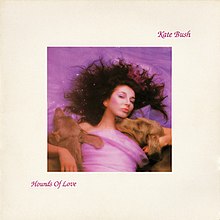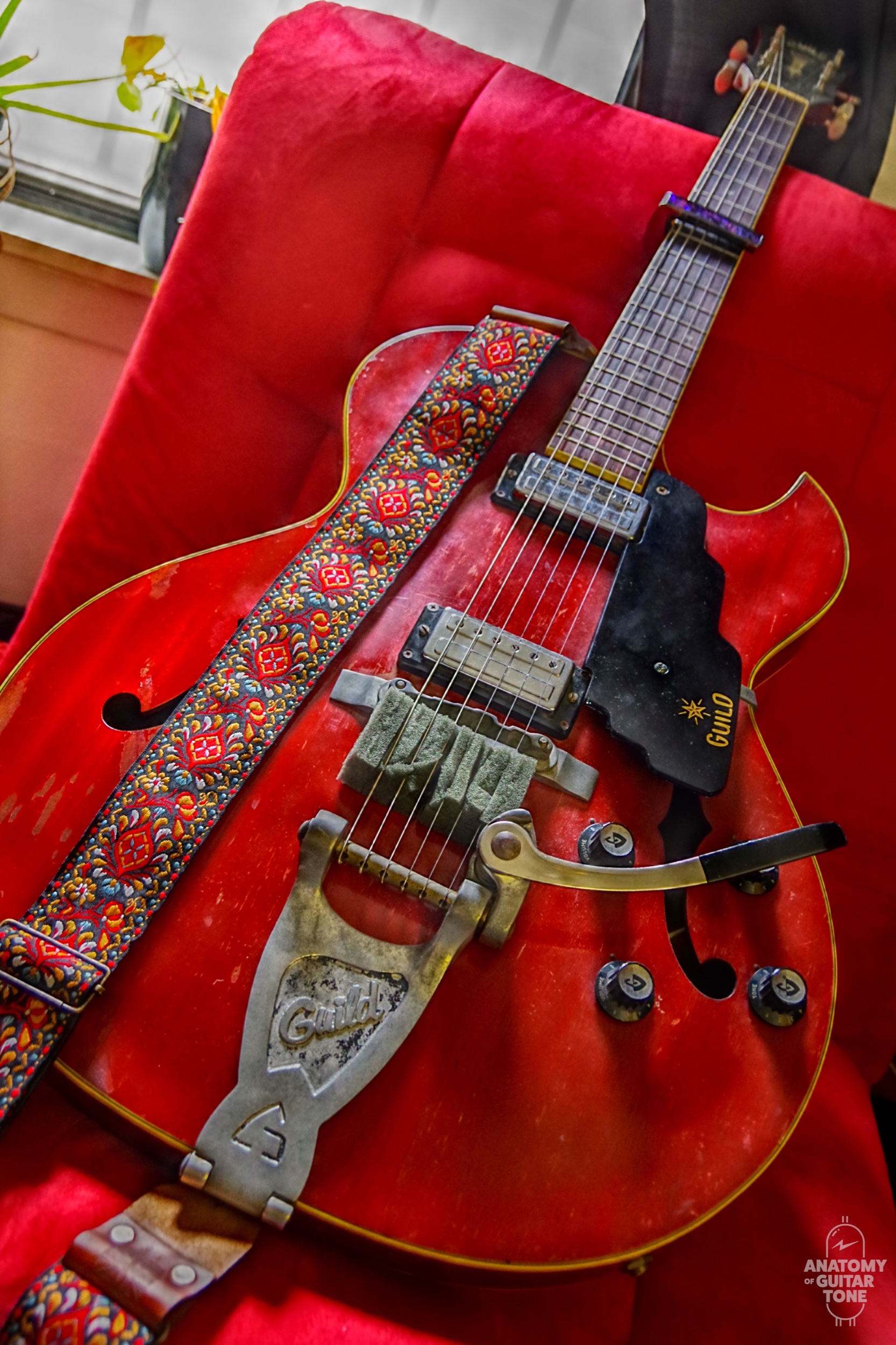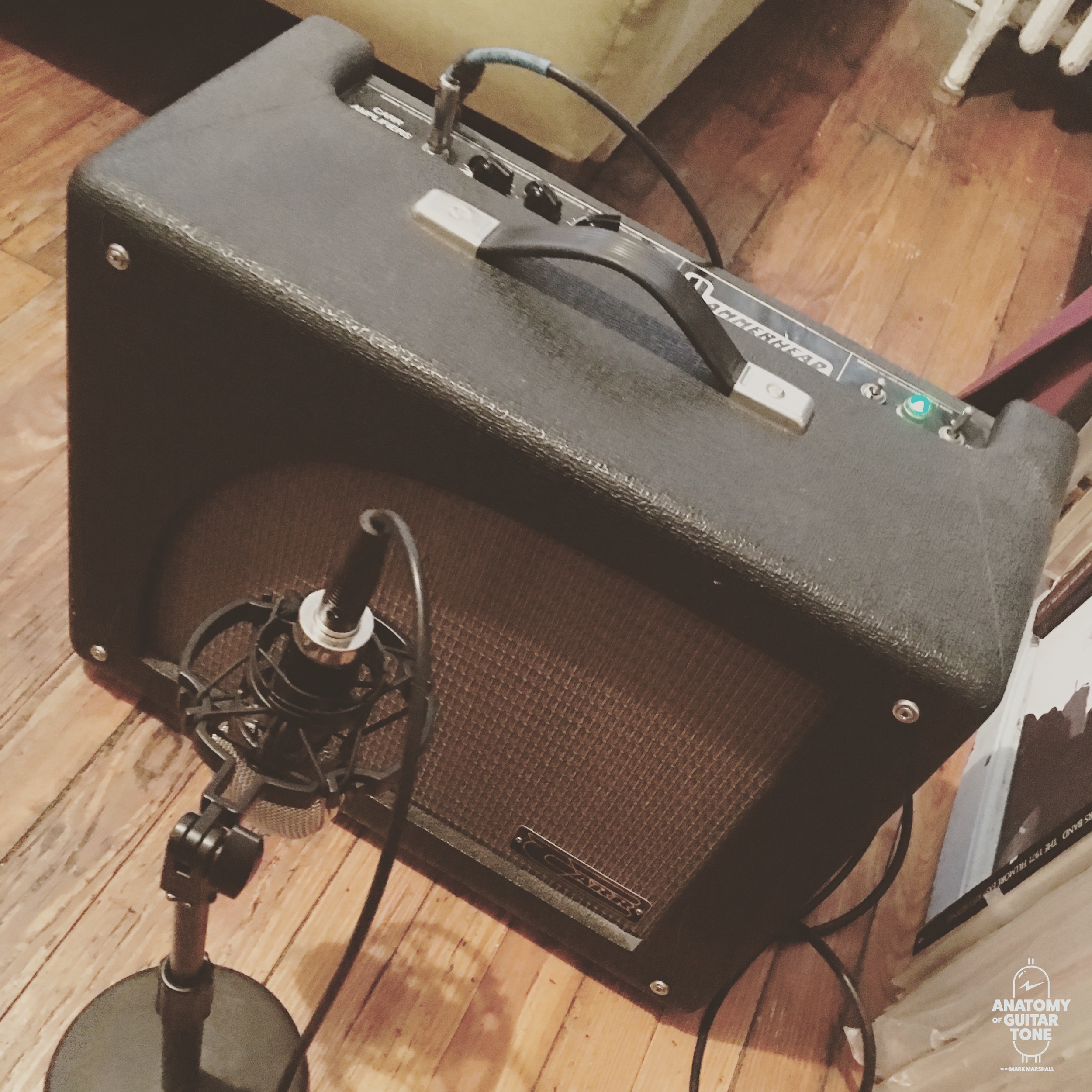Behind the Guitar: Because by Abby Ahmad
The song “Because” by Abby Ahmad started as quite a different song than what we hear today. Its life began as a song performed and written on acoustic guitar.
Most of the time, with Abby's music, the initial presentation of the song is where we build the production. Abby's songs are ready to go upon arrival at the studio, which is a testament to both her playing and writing.
Identity
“Because” seemed to want to have another identity though, we knew this because (no pun intended) we had recorded a foundational acoustic guitar part which sounded great. But somehow, it wasn't right for the song.
Abby and I were both inspired by 80's music growing up. During the making of this song, we found ourselves referencing 80's era songs by Kate Bush and Peter Gabriel. We also had a guilty pleasure for 80's pop, like Madonna.
It seemed natural to infuse some of these elements into the song. We wrote and played the keyboard part that starts the song to take over for the acoustic guitar. It seemed to add the vibe we were going for instantly.
The keyboard caused us to think about adding more elements that hint at the '80s. LINN drums and Juno 106 synths as well as the Yamaha CS-80.
It's fun to layer in electric guitars to these types of productions. The guitars weren't foundational. Rather, they were color. The guitars complement the keyboards and drums.
Guitars Session 1
We tracked the electric guitars in three sessions. The first session was at a mobile studio we put together at Abby's parent's house. We recorded several songs in her childhood bedroom.
I had a Fender Stratocaster with me and a Headstrong Lil King Reverb amp. I also traveled with a selection of guitar effects.
The first part that we did that hinted at the '80s before we added any synths was an arpeggiated guitar ostinato that plays in the outro. For that, I double-tracked the Strat using a ZVex Lofi junkie. The Lo-Fi created an old warped record tone. Soft around the edges with a chorus. I miked the Headstrong with a Fat Head ribbon mic into the UAD Apollo using the Neve 1073 mic pre.
We also tracked a couple of chord strums and background loops for the bridge: same signal chain minus the ZVex Lofi Junkie.
Guitar Session 2
The second session took place after we had the synths in place. At this point, we had a clear vision for the production. I set up the Headstrong again, but this time in our apartment.
As mentioned, I had been listening to Peter Gabriel Melt, and Kate Bush Hounds of Love records quite a bit. I was highly influenced but wasn't copying parts or tones.
What came out of that was the layered muted guitars in the second verse. We ended up using a Fender Bass VI for those parts. We also tried a baritone, but the Bass VI has all wound strings which we liked because it wasn't as twangy. Each string was in balance with the other.
Fender Bass VI
I ran this Bass VI through an Effectrode PC-2A compressor pedal to further glue the tone together.
We arranged it for three Bass VI parts each palm muted. I adjusted the dials on the Bass VI to have less bass. I liked the tonality of the Bass VI but didn't want to interfere with the actual bass. Adjusting the pickup dials allowed it to fit in perfectly.
After tracking, I added a little EMT 240 plate reverb on top of the spring reverb from the amp.
Drop Tuned with Chorus
There is an additional guitar part at the end of the second verse we lovingly call the "Time After Time" guitar. We both have a love for the Cyndi Lauper song of the same name. Although this part isn't entirely derivative of that song, the feeling of the piece made us reflect on "Time After Time."
During this period, I had also been listening to Killing Joke a lot. I admired the tone on their tune called "The Eighties". Geordie Walker has such an exciting sound. He plays a Gibson ES-295 hollow body guitar with P90 pickups into a Barman amp using a PA:CE artificial double tracker which adds a slight slap-back delay as well as a chorus.
Guild Starfire III
One interesting note about Geordie is he tunes his whole guitar down a whole step. The tuning changes the timbre of the guitar. It's less bright and more throaty even if you play the same concert pitch chord.
Inspired, I tuned my 1965 Guild Starfire down a whole step, plugged a TC Electronics Corona Chorus into the Headstrong Lil King Reverb amp. The tone you hear is not precisely the Geordie tone, but he inspired it. The part itself pretty quickly presented itself just from the sound.
This guitar shared the same signal chain as the Bass VI parts.
Showboat
The only guitar left to track at this point was the lead guitar at the end. We had already had the full solo composed which started as an improvisation on a gig. It just happened. I wouldn't have thought much about it except that it stuck with Abby. To the point that she was able to sing it.
“For the recording of the track, I knew I wanted to use a Stratocaster. The whammy bar was an integral part of the performance and expression. ”
I learned the part from that show with a few minor tweaks by Abby to get what you hear on the recording. She was quite particular about it. If I tried to change it over time, she would keep me on track. It became a composed part that came from improvisation.
For the recording of the track, I knew I wanted to use a Stratocaster. It's what best suited the playing of the part. The whammy bar was an integral part of the performance and expression. It also turned out the Strat was the right tone for the song.
Grocery List of Pedals
The hardest part was figuring out the right type of gain staging. What I didn't want was a Tube Screamer tone. That would put it into the classic rock vein too much. Distortion did the same. Choosing a pedal to do the work was a challenge. If I was in a place where I could crank my guitar amp, I prob would have been happy with that. However, there were volume limits in our apartment. This led me to pedals.
I tried a lot of pedals. Most didn't seem right until I combined the Analog Man Sunface and an Effectrode Tube Drive. Most of the gain is coming from the Sun Face. The Tube Drive is there to mellow out the fizz a little. Very little saturation is coming from the Tube Drive.
An important note about the Sun Face is I rolled my guitar volume back a click or two. The Sun Face is a Fuzz Face circuit which means there is a unique tone when you roll off the volume. This germanium circuit responds better to volume changes than any other fuzz, in my opinion.
I wanted lots of sustain for the lead, but I didn't want it to be over-compressed. It had to feel a little wild. Rolling the volume back kept the tone dynamic. When the volume is at full with a Fuzz Face, it can be quite compressed like with any fuzz.
Amped Up
I ran the pedals into a Carr Hammerhead amp. In general, this isn't my favorite amp for recording. It can sound great live as it has a bell-like tone. But, putting a mic in front of it can sound a little brittle sometimes. I had decided to use the amp for some reason, and I fought with it.
I eventually got the performance I wanted and worked with the tone a bit in post. I most likely would not have struggled with it as much if I had used another amp. I know this but for some reason decided I would stick with it. If it isn't working, always swap it out. Things don't get easier to fix downstream.
What I wanted was a Vox tone, but I didn't have one yet. I'm happy with the sound in the end, but I know I could have gotten there quicker.
Pretend It's Tape
There wasn't much comping done on this track. I don't really like working that way. I'm not saying I will never comp. But in most situations, I work to get the part right. I find it makes a more cohesive track.
If I do comp, I make my comps immediately. I don't like piecing a puzzle together later.
“I try to get the sounds as close as possible when tracking.”
Geoff Sanoff mixed the track for us, and the guitars sound pretty much the same as they did when they left. I try to get the sounds as close as possible when tracking. I'm not opposed to creative mixing, but if we're not leaving room for such endeavors, I like it to sound as close to mixed as possible.
You can watch the official video for "Because" by Abby Ahmad here:

















